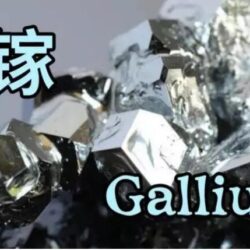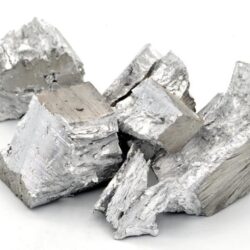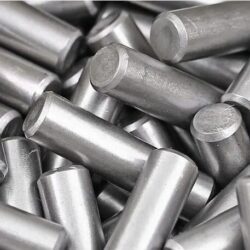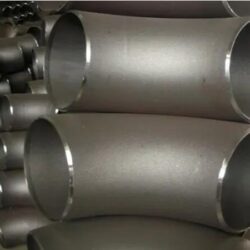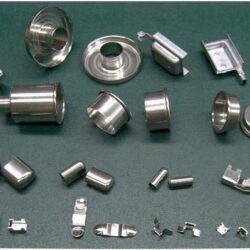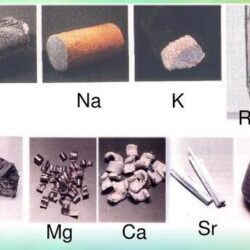Copper is a chemical element with the symbol Cu (from Latin: cuprum) and atomic number 29. It is a soft, malleable, and ductile metal with very high thermal and electrical conductivity. A freshly exposed surface of pure copper has a pinkish-orange color. Copper is used as a conductor of heat and electricity, as a building material, and as a constituent of various metal alloys, such as sterling silver used in jewelry, cupronickel used to make marine hardware and coins, and constantan used in strain gauges and thermocouples for temperature measurement.

Copper is one of the few metals that can occur in nature in a directly usable metallic form (native metals). This led to very early human use in several regions, from c. 8000 BC. Thousands of years later, it was the first metal to be smelted from sulfide ores, c. 5000 BC; the first metal to be cast into a shape in a mold, c. 4000 BC; and the first metal to be purposely alloyed with another metal, tin, to create bronze, c. 3500 BC.
In the Roman era, copper was mined principally on Cyprus, the origin of the name of the metal, from aes сyprium (metal of Cyprus), later corrupted to сuprum (Latin). Coper (Old English) and copper were derived from this, the later spelling first used around 1530.
Commonly encountered compounds are copper(II) salts, which often impart blue or green colors to such minerals as azurite, malachite, and turquoise, and have been used widely and historically as pigments.
Copper used in buildings, usually for roofing, oxidizes to form a green verdigris (or patina). Copper is sometimes used in decorative art, both in its elemental metal form and in compounds as pigments. Copper compounds are used as bacteriostatic agents, fungicides, and wood preservatives.
Copper is essential to all living organisms as a trace dietary mineral because it is a key constituent of the respiratory enzyme complex cytochrome c oxidase. In molluscs and crustaceans, copper is a constituent of the blood pigment hemocyanin, replaced by the iron-complexed hemoglobin in fish and other vertebrates. In humans, copper is found mainly in the liver, muscle, and bone.The adult body contains between 1.4 and 2.1 mg of copper per kilogram of body weight.

Characteristics
Physical
Copper, silver, and gold are in group 11 of the periodic table; these three metals have one s-orbital electron on top of a filled d-electron shell and are characterized by high ductility, and electrical and thermal conductivity. The filled d-shells in these elements contribute little to interatomic interactions, which are dominated by the s-electrons through metallic bonds. Unlike metals with incomplete d-shells, metallic bonds in copper are lacking a covalent character and are relatively weak. This observation explains the low hardness and high ductility of single crystals of copper.[9] At the macroscopic scale, introduction of extended defects to the crystal lattice, such as grain boundaries, hinders flow of the material under applied stress, thereby increasing its hardness. For this reason, copper is usually supplied in a fine-grained polycrystalline form, which has greater strength than monocrystalline forms.
The softness of copper partly explains its high electrical conductivity (59.6×106 S/m) and high thermal conductivity, second highest (second only to silver) among pure metals at room temperature.[11] This is because the resistivity to electron transport in metals at room temperature originates primarily from scattering of electrons on thermal vibrations of the lattice, which are relatively weak in a soft metal.[9] The maximum permissible current density of copper in open air is approximately 3.1×106 A/m2 of cross-sectional area, above which it begins to heat excessively.
Copper is one of a few metallic elements with a natural color other than gray or silver.[13] Pure copper is orange-red and acquires a reddish tarnish when exposed to air. The characteristic color of copper results from the electronic transitions between the filled 3d and half-empty 4s atomic shells – the energy difference between these shells corresponds to orange light.[citation needed]
As with other metals, if copper is put in contact with another metal, galvanic corrosion will occur.
Chemical
Copper does not react with water, but it does slowly react with atmospheric oxygen to form a layer of brown-black copper oxide which, unlike the rust that forms on iron in moist air, protects the underlying metal from further corrosion (passivation). A green layer of verdigris (copper carbonate) can often be seen on old copper structures, such as the roofing of many older buildingsand the Statue of Liberty.Copper tarnishes when exposed to some sulfur compounds, with which it reacts to form various copper sulfides.
Alloys
Numerous copper alloys have been formulated, many with important uses. Brass is an alloy of copper and zinc. Bronze usually refers to copper-tin alloys, but can refer to any alloy of copper such as aluminium bronze. Copper is one of the most important constituents of silver and karat gold solders used in the jewelry industry, modifying the color, hardness and melting point of the resulting alloys.[45] Some lead-free solders consist of tin alloyed with a small proportion of copper and other metals.
The alloy of copper and nickel, called cupronickel, is used in low-denomination coins, often for the outer cladding. The US five-cent coin (currently called a nickel) consists of 75% copper and 25% nickel in homogeneous composition. Prior to the introduction of cupronickel, which was widely adopted by countries in the latter half of the 20th century,[47] alloys of copper and silver were also used, with the United States using an alloy of 90% silver and 10% copper until 1965, when circulating silver was removed from all coins with the exception of the Half dollar – these were debased to an alloy of 40% silver and 60% copper between 1965 and 1970.[48] The alloy of 90% copper and 10% nickel, remarkable for its resistance to corrosion, is used for various objects exposed to seawater, though it is vulnerable to the sulfides sometimes found in polluted harbors and estuaries.[49] Alloys of copper with aluminium (about 7%) have a golden color and are used in decorations.[22] Shakudō is a Japanese decorative alloy of copper containing a low percentage of gold, typically 4–10%, that can be patinated to a dark blue or black color

Applications
The major applications of copper are electrical wire (60%), roofing and plumbing (20%), and industrial machinery (15%). Copper is used mostly as a pure metal, but when greater hardness is required, it is put into such alloys as brass and bronze (5% of total use).[22] For more than two centuries, copper paint has been used on boat hulls to control the growth of plants and shellfish.[98] A small part of the copper supply is used for nutritional supplements and fungicides in agriculture.[53][99] Machining of copper is possible, although alloys are preferred for good machinability in creating intricate parts.

Wire and cable
Main article: Copper wire and cable
Despite competition from other materials, copper remains the preferred electrical conductor in nearly all categories of electrical wiring except overhead electric power transmission where aluminium is often preferred.[100][101] Copper wire is used in power generation, power transmission, power distribution, telecommunications, electronics circuitry, and countless types of electrical equipment.[102] Electrical wiring is the most important market for the copper industry.[103] This includes structural power wiring, power distribution cable, appliance wire, communications cable, automotive wire and cable, and magnet wire. Roughly half of all copper mined is used for electrical wire and cable conductors.[104] Many electrical devices rely on copper wiring because of its multitude of inherent beneficial properties, such as its high electrical conductivity, tensile strength, ductility, creep (deformation) resistance, corrosion resistance, low thermal expansion, high thermal conductivity, ease of soldering, malleability, and ease of installation.
For a short period from the late 1960s to the late 1970s, copper wiring was replaced by aluminium wiring in many housing construction projects in America. The new wiring was implicated in a number of house fires and the industry returned to copper.[105]
Electronics and related devices
Copper electrical busbars distributing power to a large building
Integrated circuits and printed circuit boards increasingly feature copper in place of aluminium because of its superior electrical conductivity; heat sinks and heat exchangers use copper because of its superior heat dissipation properties. Electromagnets, vacuum tubes, cathode ray tubes, and magnetrons in microwave ovens use copper, as do waveguides for microwave radiation.[106]
Electric motors
Copper’s superior conductivity enhances the efficiency of electrical motors.[107] This is important because motors and motor-driven systems account for 43%–46% of all global electricity consumption and 69% of all electricity used by industry.[108] Increasing the mass and cross section of copper in a coil increases the efficiency of the motor. Copper motor rotors, a new technology designed for motor applications where energy savings are prime design objectives,[109][110] are enabling general-purpose induction motors to meet and exceed National Electrical Manufacturers Association (NEMA) premium efficiency standards.[111]
Architecture
Main article: Copper in architecture
Copper roof on the Minneapolis City Hall, coated with patina
Old copper utensils in a Jerusalem restaurant
Large copper bowl. Dhankar Gompa.
Copper has been used since ancient times as a durable, corrosion resistant, and weatherproof architectural material.[112][113][114][115] Roofs, flashings, rain gutters, downspouts, domes, spires, vaults, and doors have been made from copper for hundreds or thousands of years. Copper’s architectural use has been expanded in modern times to include interior and exterior wall cladding, building expansion joints, radio frequency shielding, and antimicrobial and decorative indoor products such as attractive handrails, bathroom fixtures, and counter tops. Some of copper’s other important benefits as an architectural material include low thermal movement, light weight, lightning protection, and recyclability
The metal’s distinctive natural green patina has long been coveted by architects and designers. The final patina is a particularly durable layer that is highly resistant to atmospheric corrosion, thereby protecting the underlying metal against further weathering.[116][117][118] It can be a mixture of carbonate and sulfate compounds in various amounts, depending upon environmental conditions such as sulfur-containing acid rain.[119][120][121][122] Architectural copper and its alloys can also be ‘finished’ to take on a particular look, feel, or color. Finishes include mechanical surface treatments, chemical coloring, and coatings.[123]
Copper has excellent brazing and soldering properties and can be welded; the best results are obtained with gas metal arc welding.[124]
Antibiofouling
Main articles: Copper alloys in aquaculture and Copper sheathing
Copper is biostatic, meaning bacteria and many other forms of life will not grow on it. For this reason it has long been used to line parts of ships to protect against barnacles and mussels. It was originally used pure, but has since been superseded by Muntz metal and copper-based paint. Similarly, as discussed in copper alloys in aquaculture, copper alloys have become important netting materials in the aquaculture industry because they are antimicrobial and prevent biofouling, even in extreme conditions[125] and have strong structural and corrosion-resistant[126] properties in marine environments.
Antimicrobial
Main articles: Antimicrobial properties of copper and Antimicrobial copper-alloy touch surfaces
Copper-alloy touch surfaces have natural properties that destroy a wide range of microorganisms (e.g., E. coli O157:H7, methicillin-resistant Staphylococcus aureus (MRSA), Staphylococcus, Clostridium difficile, influenza A virus, adenovirus, and fungi).[127] Indians have been using copper vessels since ancient times for storing water, even before modern science realized it’s antimicrobial properties.[128] Some 355 copper alloys[clarification needed] were proven to kill more than 99.9% of disease-causing bacteria within just two hours when cleaned regularly.[129] The United States Environmental Protection Agency (EPA) has approved the registrations of these copper alloys as “antimicrobial materials with public health benefits”;[129] that approval allows manufacturers to make legal claims to the public health benefits of products made of registered alloys. In addition, the EPA has approved a long list of antimicrobial copper products made from these alloys, such as bedrails, handrails, over-bed tables, sinks, faucets, door knobs, toilet hardware, computer keyboards, health club equipment, and shopping cart handles (for a comprehensive list, see: Antimicrobial copper-alloy touch surfaces#Approved products). Copper doorknobs are used by hospitals to reduce the transfer of disease, and Legionnaires’ disease is suppressed by copper tubing in plumbing systems.[130] Antimicrobial copper alloy products are now being installed in healthcare facilities in the U.K., Ireland, Japan, Korea, France, Denmark, and Brazil, as well as being called for in the US,[131] and in the subway transit system in Santiago, Chile, where copper-zinc alloy handrails were installed in some 30 stations between 2011 and 2014.[132][133][134] Textile fibers can be blended with copper to create antimicrobial protective fabrics.[135]
Speculative investing
Copper may be used as a speculative investment due to the predicted increase in use from worldwide infrastructure growth, and the important role it has in producing wind turbines, solar panels, and other renewable energy sources.[136][137] Another reason predicted demand increases is the fact that electric cars contain an average of 3.6 times as much copper as conventional cars, although the effect of electric cars on copper demand is debated.[138][139] Some people invest in copper through copper mining stocks, ETFs, and futures. Others store physical copper in the form of copper bars or rounds although these tend to carry a higher premium in comparison to precious metals.[140] Those who want to avoid the premiums of copper bullion alternatively store old copper wire, copper tubing or American pennies made before 1982.[141]
Copper in Yoga
This is a copper snake ring, typically worn by yogis following Sadhguru Jaggi Vasudev.
Indian yogis have been known to wear copper rings to aid their spiritual journey,[128] it is said[by whom?] that by a copper ring worn by a seeker on the ring finger stabilizes the body and provides the fundamental support for spiritual practices. With the right kind of spiritual and yogic practices, wearing a ring can become a key to mystical dimensions of life.
Folk medicine
Copper is commonly used in jewelry, and according to some folklore, copper bracelets relieve arthritis symptoms.[142] In one trial for osteoarthritis and one trial for rheumatoid arthritis, no differences is found between copper bracelet and control (non-copper) bracelet.[143][144] No evidence shows that copper can be absorbed through the skin. If it were, it might lead to copper poisoning.[145]
Compression clothing
Recently, some compression clothing with inter-woven copper has been marketed with health claims similar to the folk medicine claims. Because compression clothing is a valid treatment for some ailments, the clothing may have that benefit, but the added copper may have no benefit beyond a placebo effect.[
Degradation
Chromobacterium violaceum and Pseudomonas fluorescens can both mobilize solid copper as a cyanide compound.[147] The ericoid mycorrhizal fungi associated with Calluna, Erica and Vaccinium can grow in metalliferous soils containing copper.[147] The ectomycorrhizal fungus Suillus luteus protects young pine trees from copper toxicity. A sample of the fungus Aspergillus niger was found growing from gold mining solution and was found to contain cyano complexes of such metals as gold, silver, copper, iron, and zinc. The fungus also plays a role in the solubilization of heavy metal sulfides.
Health benefits and risks of copper
Copper is an essential trace mineral necessary for survival. It is found in all body tissues and plays a role in making red blood cells and maintaining nerve cells and the immune system
Fast facts about copper:
- Copper is necessary for a range of bodily functions.
- Copper deficiency is rare except in specific conditions, such as Menkes disease.
- Copper supplements are not usually necessary and may lead to an imbalance.
- A copper imbalance has been linked to Alzheimer’s disease.
- Anyone who is considering copper supplements should first speak to a doctor.
Health benefits
Copper is a useful material, but it is also a valuable mineral found in food.
Copper is an essential nutrient for the body.
Together with iron, it enables the body to form red blood cells.
It helps maintain healthy bones, blood vessels, nerves, and immune function, and it contributes to iron absorption.
Sufficient copper in the diet may help prevent cardiovascular disease and osteoporosis, too.
Cardiovascular health
Low copper levels have been linked to high cholesterol and high blood pressure. One group of researchers has suggested that some patients with heart failure may benefit from copper supplements.
Animal studies have linked low copper levels to CVD, but it remains unclear if a deficiency would have the same impact on humans.
Neuron signalling
In 2016, Prof. Chris Chang, a chemist who is part of the Sackler Sabbatical Exchange Program at Berkeley, CA, devised and used a fluorescent probe to track the movement of copper in and out of nerve cells.
Prof. Chang says: “Copper is like a brake or dimmer switch, one for each nerve cell.”
His team found that, if high amounts of copper enter a cell, this appears to reduce neuron signaling. When copper levels in that cell fall, signaling resumes.
Immune function
Too little copper can lead to neutropenia. This is a deficiency of white blood cells, or neutrophils, which fight off infection.
A person with a low level of neutrophils is more likely to get an infectious disease.
Osteoporosis
Severe copper deficiency is associated with lower bone mineral density and a higher risk of osteoporosis.
More research is needed on how marginal copper deficiency may affect bone health, and how copper supplementation might help prevent and manage osteoporosis.
Collagen production
Copper plays an important role in maintaining collagen and elastin, major structural components of our bodies. Scientists have hypothesized thatTrusted Source copper may have antioxidant properties, and that, together with other antioxidants, a healthful intake may help prevent skin aging.
Without sufficient copper, the body cannot replace damaged connective tissue or the collagen that makes up the scaffolding for bone.
This can lead to a range of problems, including joint dysfunction, as bodily tissues begin to break down.
Arthritis
Animal studies have indicated that copper may help prevent or delay arthritis, and people wear copper bracelets for this purpose. However, no human studies have confirmed this.
Antioxidant action
Copper may also have an antioxidant function. It may help reduce the production of free radicals.
